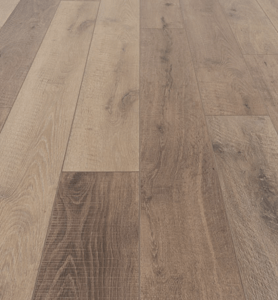When it comes to winter, and hardwood floor installation, even the job with the most delicate work can end up drying out and shrinking, leading to additional problems. This all stems from the relationship wood has with air. In essence, air with low relative humidity causes a loss of moisture, which, in turn, leads to shrinking. Here’s how to manage this with your hardwood flooring products.
Finding The Right Flooring

Narrow boards are less likely to give you gap problems.
Remember, while engineered flooring should be more stable on paper, most manufacturers will say this only applies in a certain relative humidity range. This can apply to a variety of different figures and, if you have the wrong setting, not only is there still that gap risk, but it may also impact your warranty. There are a lot of different humidity bands across the U.S., so be sure to know what type your ideal wood is best suited for.
On that topic, a narrow board will shrink at a lower rate than the wide board in terms of moisture content. Along with this, the size of the gaps between the wider boards will be bigger as well. Compounding this is the fact that more joints equal more potential gap distribution.
Choosing A Wood Type
Another point of consideration is that certain types of wood are more naturally stable than other species. As an example, if you have a piece of hickory plank 5 inches wide, it would shrink more a comparable oak plank. You can reference the U.S. Forest Service to learn what types of wood are more likely to get gaps. Along with this, you may not realize that quarter-sawn flooring shrinks at half the rate of its flat-sawn counterpart, with the same amount of moisture. As a result, quarter-sawn, narrow boards from a specific species are the best option for less gaps.
Want to repair some of these gaps? Contract a flooring professional. They are a key resource for care and installation of wooden floors in Denver.

